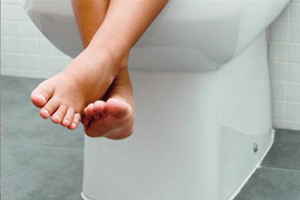Practice toileting
You will need:
|
 |
Signs of Readiness:
- Knows when wetting or soiling when it happens or after it happens
- Can hold on for up to 2 hours
- Shows an interest in other’s toileting habits
- Uses toileting language
- Ability to dress and undress
You should:
- Remain calm and patient
- Offer toileting opportunities regularly during the day
- Ensure that your child doesn’t sit longer than 5 minutes
- Dress your child in clothing that is easy to pull down or up
- Get your child to flush the toilet
- Remember to get your child to wash their hands
- Reward and praise efforts
- Try to pick a time when a daily routine will be followed
- Offer the toilet a few minutes after food or drink
- During the day ask if your child would like to go to the toilet
- Remember accidents will happen and accept this as part of the learning process
Did you know:
The average age for children to be completely toilet trained is 3 years for girls and 3 ½ years for boys. Summer time is a good time to start toilet training as your chid is wearing fewer clothes and laundry is easier.
What your child is learning:
Children will usually follow these developmental stages:
- 1 -2 years – gradual awareness of bladder
- 3 years – able to tense muscles of the pelvic floor and hold on
- 4 years – able to stop the flow of urine
- 6 years – able to start urination at any stage of bladder filling
